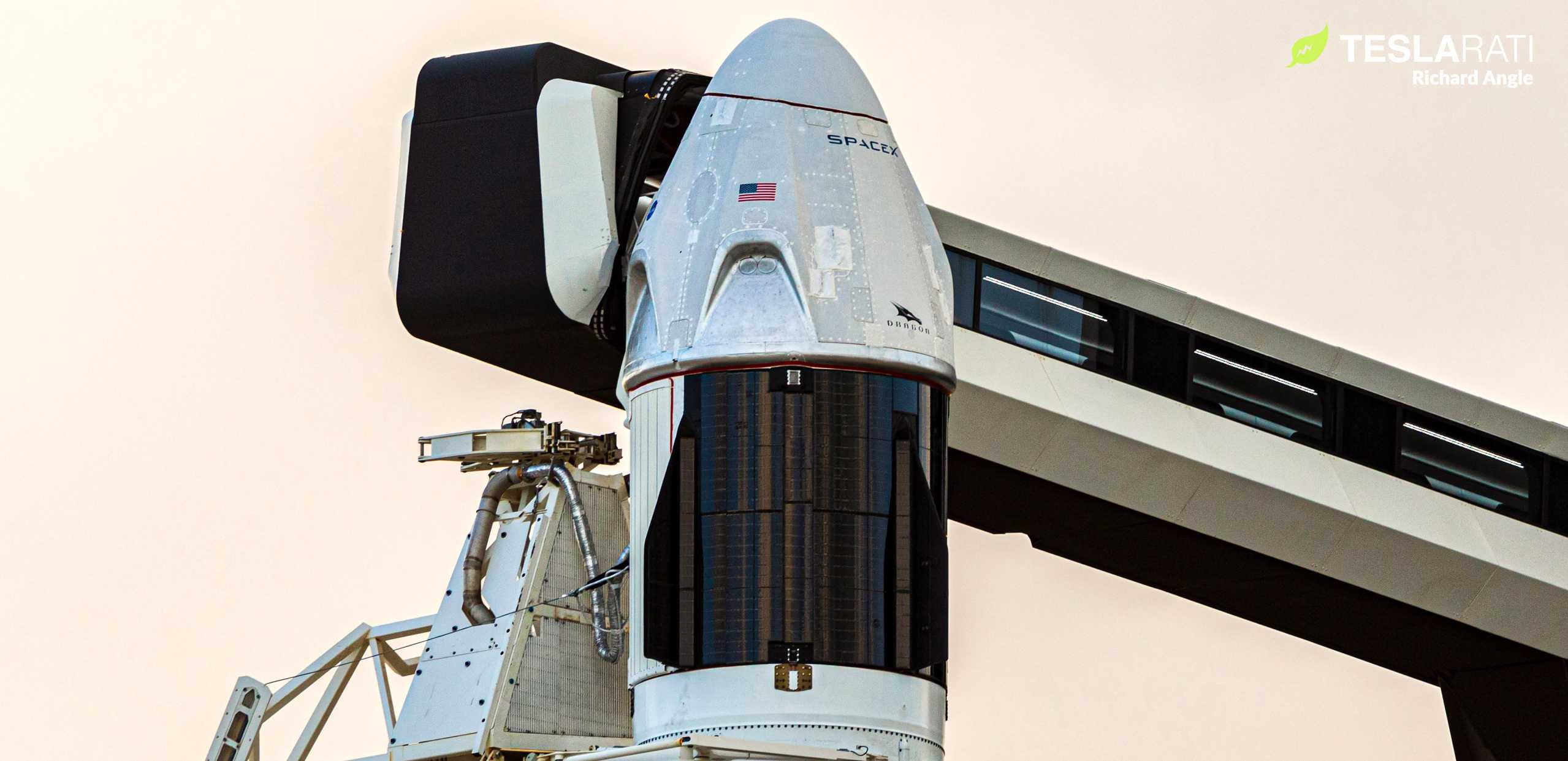
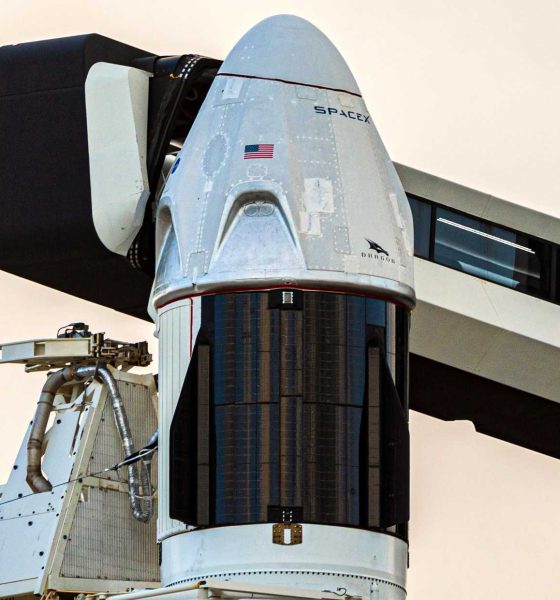
News
SpaceX's Crew Dragon is about to escape a supersonic rocket: here's how to watch live
SpaceX’s Crew Dragon spacecraft is set to attempt to escape a supersonic Falcon 9 in what will likely be the first intentional in-flight destruction of an orbital-class rocket in decades.
Known as an In-Flight Abort test, Crew Dragon’s second test flight is guaranteed to be spectacular and will thankfully be streamed live by both NASA and SpaceX. Scheduled to lift off no earlier than 8 am EST (13:00 UTC), January 18th, the IFA could also be Crew Dragon’s last uncrewed launch ever, hopefully paving the way for its first orbital flight with NASA astronauts on board just a few months from now.
For now, SpaceX’s primary focus with the IFA test is to prove that Crew Dragon can protect passengers and cargo even in the unlikely event that Falcon 9 fails in flight – after liftoff but before the spacecraft has separated from the rocket.
After several months of delays brought on by the explosion of Crew Dragon capsule C201 in April 2019 and an additional two-week slip from NASA’s first public launch date, Falcon 9 booster (B1046) and Crew Dragon capsule C205 have both completed static fire tests of their respective rocket engines and rolled out to Pad 39A on January 16th.
After at least half a year of investigation and a similar period spent redesigning and requalifying a subsection of the high-pressure propellant plumbing that feeds Crew Dragon’s SuperDraco abort thrusters, new capsule C205 successfully fired up a handful of Draco maneuvering thrusters and all 8 of its SuperDracos abort engines, simulating the burns it will have to perform during Saturday’s IFA test.
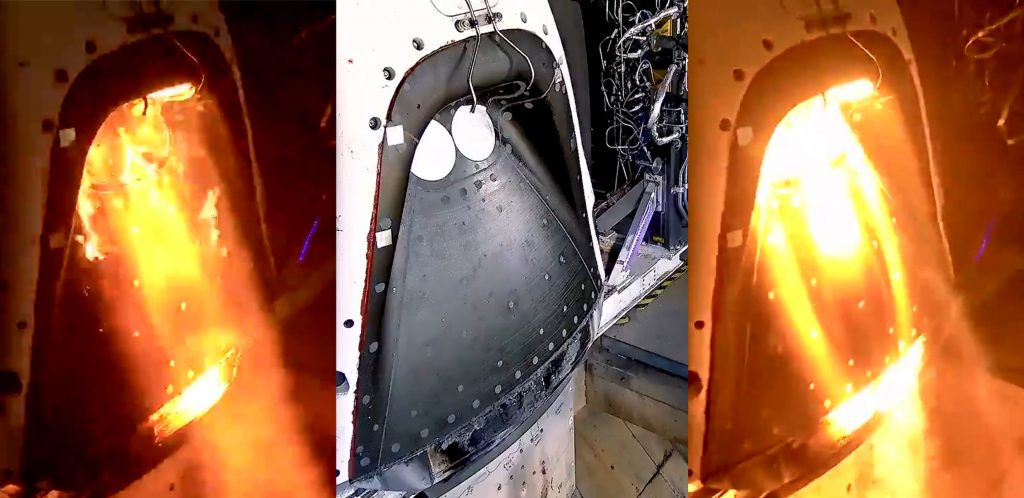
According to NASA and SpaceX, the ~48 hours between rollout and liftoff have been used to perform a dry run for future NASA astronaut launches, more or less exactly replicating the processes that will soon be used for real. Of course, Demo-2 astronauts Bob Behnken and Doug Hurley didn’t actually board the Crew Dragon spacecraft (its interior is unfinished) and will certainly not be on board come liftoff, but everything up to the point of spacecraft ingress was performed as if they will be.
Audiences will likely be treated to a rare view from inside SpaceX’s flight operations center, recently permanently relocated to Firing Room 4 of NASA’s Flight Control Center (FCC) – a facility with substantial historical ties to US human spaceflight. It was last utilized as part of Crew Dragon’s inaugural orbital launch – “Demo-1” – in March 2019.
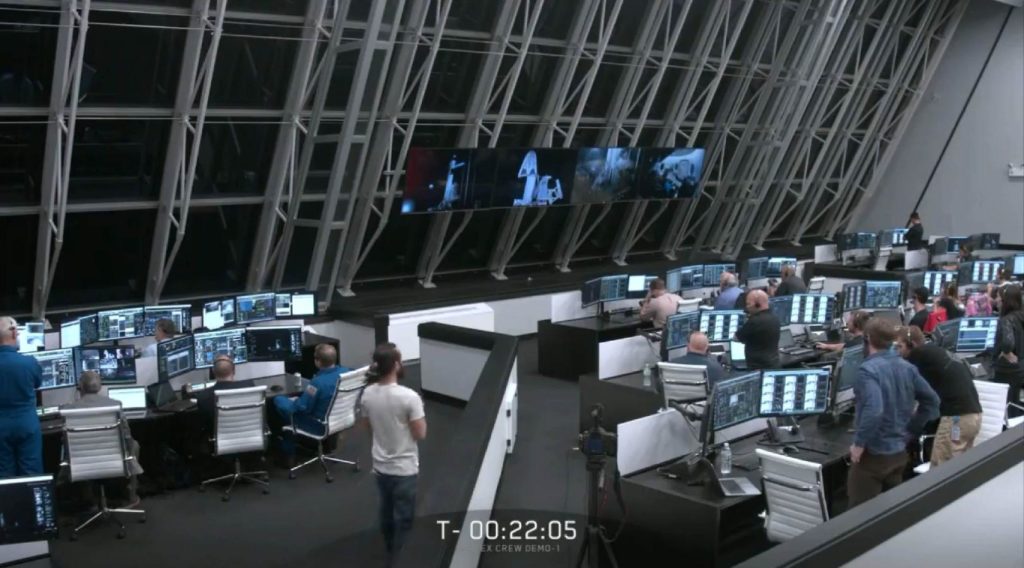
Approximately 90 seconds after liftoff, shortly after a point of maximum aerodynamic stress called Max Q, Crew Dragon will ignite its SuperDraco abort thrusters in an attempt to prove that it can whisk astronauts to safety in even a near-worst-case scenario. After a 10-second SuperDraco burn, the spacecraft will have to stabilize itself, reenter the bulk of Earth’s atmosphere, and deploy four main parachutes for a gentle splashdown in the Atlantic Ocean.
A combined SpaceX and USAF team will recover the hopefully-intact spacecraft from the ocean, likely using the opportunity to once again simulate the process of recovering a crewed Crew Dragon and safely extracting the NASA astronauts strapped inside it.
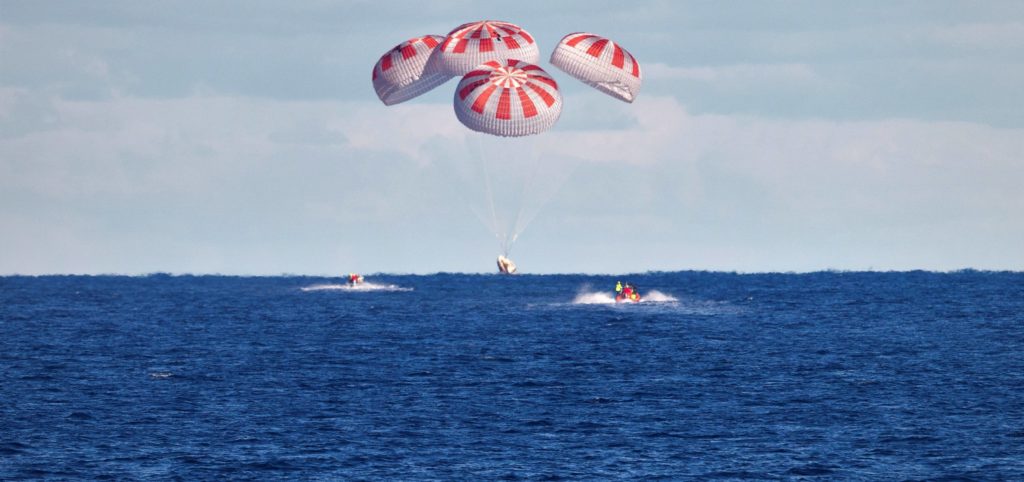
Falcon 9 booster B1046 is expected to be “destroyed in Dragon fire”, according to SpaceX CEO Elon Musk. The Crew Dragon capsule will jettison mid-flight, leaving B1046 open to extremely abnormal aerodynamic stress that will likely tear it and the upper stage apart. NASA says SpaceX will attempt to recover as much of the expected rocket debris as possible.
Crew Dragon’s IFA test has a four-hour launch window with liftoff targeted no earlier than (NET) 8 am EST (13:00 UTC), January 18th. For a variety of reasons, this mission is uniquely susceptible to weather both at and around the launch pad and stands a good chance of slipping much later into the window, and backups are available at the same time on Sunday and Monday.
Regardless, SpaceX will provide live coverage of the test whenever it does launch, beginning around 15 minutes prior to liftoff. Teslarati photographer Richard Angle and reporter Jamie Groh will be on-site to document the events of Crew Dragon crucial – and likely spectacular – flight test.
Check out Teslarati’s Marketplace! We offer Tesla accessories, including for the Tesla Cybertruck and Tesla Model 3.

News
Tesla FSD fleet is nearing 7 billion total miles, including 2.5 billion city miles
As can be seen on Tesla’s official FSD webpage, vehicles equipped with the system have now navigated over 6.99 billion miles.

Tesla’s Full Self-Driving (Supervised) fleet is closing in on almost 7 billion total miles driven, as per data posted by the company on its official FSD webpage.
These figures hint at the massive scale of data fueling Tesla’s rapid FSD improvements, which have been quite notable as of late.
FSD mileage milestones
As can be seen on Tesla’s official FSD webpage, vehicles equipped with the system have now navigated over 6.99 billion miles. Tesla owner and avid FSD tester Whole Mars Catalog also shared a screenshot indicating that from the nearly 7 billion miles traveled by the FSD fleet, more than 2.5 billion miles were driven inside cities.
City miles are particularly valuable for complex urban scenarios like unprotected turns, pedestrian interactions, and traffic lights. This is also the difference-maker for FSD, as only complex solutions, such as Waymo’s self-driving taxis, operate similarly on inner-city streets. And even then, incidents such as the San Francisco blackouts have proven challenging for sensor-rich vehicles like Waymos.
Tesla’s data edge
Tesla has a number of advantages in the autonomous vehicle sector, one of which is the size of its fleet and the number of vehicles training FSD on real-world roads. Tesla’s nearly 7 billion FSD miles then allow the company to roll out updates that make its vehicles behave like they are being driven by experienced drivers, even if they are operating on their own.
So notable are Tesla’s improvements to FSD that NVIDIA Director of Robotics Jim Fan, after experiencing FSD v14, noted that the system is the first AI that passes what he described as a “Physical Turing Test.”
“Despite knowing exactly how robot learning works, I still find it magical watching the steering wheel turn by itself. First it feels surreal, next it becomes routine. Then, like the smartphone, taking it away actively hurts. This is how humanity gets rewired and glued to god-like technologies,” Fan wrote in a post on X.
News
Tesla starts showing how FSD will change lives in Europe
Local officials tested the system on narrow country roads and were impressed by FSD’s smooth, human-like driving, with some calling the service a game-changer for everyday life in areas that are far from urban centers.

Tesla has launched Europe’s first public shuttle service using Full Self-Driving (Supervised) in the rural Eifelkreis Bitburg-Prüm region of Germany, demonstrating how the technology can restore independence and mobility for people who struggle with limited transport options.
Local officials tested the system on narrow country roads and were impressed by FSD’s smooth, human-like driving, with some calling the service a game-changer for everyday life in areas that are far from urban centers.
Officials see real impact on rural residents
Arzfeld Mayor Johannes Kuhl and District Administrator Andreas Kruppert personally tested the Tesla shuttle service. This allowed them to see just how well FSD navigated winding lanes and rural roads confidently. Kruppert said, “Autonomous driving sounds like science fiction to many, but we simply see here that it works totally well in rural regions too.” Kuhl, for his part, also noted that FSD “feels like a very experienced driver.”
The pilot complements the area’s “Citizen Bus” program, which provides on-demand rides for elderly residents who can no longer drive themselves. Tesla Europe shared a video of a demonstration of the service, highlighting how FSD gives people their freedom back, even in places where public transport is not as prevalent.
What the Ministry for Economic Affairs and Transport says
Rhineland-Palatinate’s Minister Daniela Schmitt supported the project, praising the collaboration that made this “first of its kind in Europe” possible. As per the ministry, the rural rollout for the service shows FSD’s potential beyond major cities, and it delivers tangible benefits like grocery runs, doctor visits, and social connections for isolated residents.
“Reliable and flexible mobility is especially vital in rural areas. With the launch of a shuttle service using self-driving vehicles (FSD supervised) by Tesla in the Eifelkreis Bitburg-Prüm, an innovative pilot project is now getting underway that complements local community bus services. It is the first project of its kind in Europe.
“The result is a real gain for rural mobility: greater accessibility, more flexibility and tangible benefits for everyday life. A strong signal for innovation, cooperation and future-oriented mobility beyond urban centers,” the ministry wrote in a LinkedIn post.
News
Tesla China quietly posts Robotaxi-related job listing
Tesla China is currently seeking a Low Voltage Electrical Engineer to work on circuit board design for the company’s autonomous vehicles.

Tesla has posted a new job listing in Shanghai explicitly tied to its Robotaxi program, fueling speculation that the company is preparing to launch its dedicated autonomous ride-hailing service in China.
As noted in the listing, Tesla China is currently seeking a Low Voltage Electrical Engineer to work on circuit board design for the company’s autonomous vehicles.
Robotaxi-specific role
The listing, which was shared on social media platform X by industry watcher @tslaming, suggested that Tesla China is looking to fill the role urgently. The job listing itself specifically mentions that the person hired for the role will be working on the Low Voltage Hardware team, which would design the circuit boards that would serve as the nervous system of the Robotaxi.
Key tasks for the role, as indicated in the job listing, include collaboration with PCB layout, firmware, mechanical, program management, and validation teams, among other responsibilities. The role is based in Shanghai.
China Robotaxi launch
China represents a massive potential market for robotaxis, with its dense urban centers and supportive policies in select cities. Tesla has limited permission to roll out FSD in the country, though despite this, its vehicles have been hailed as among the best in the market when it comes to autonomous features. So far, at least, it appears that China supports Tesla’s FSD and Robotaxi rollout.
This was hinted at in November, when Tesla brought the Cybercab to the 8th China International Import Expo (CIIE) in Shanghai, marking the first time that the autonomous two-seater was brought to the Asia-Pacific region. The vehicle, despite not having a release date in China, received a significant amount of interest among the event’s attendees.








